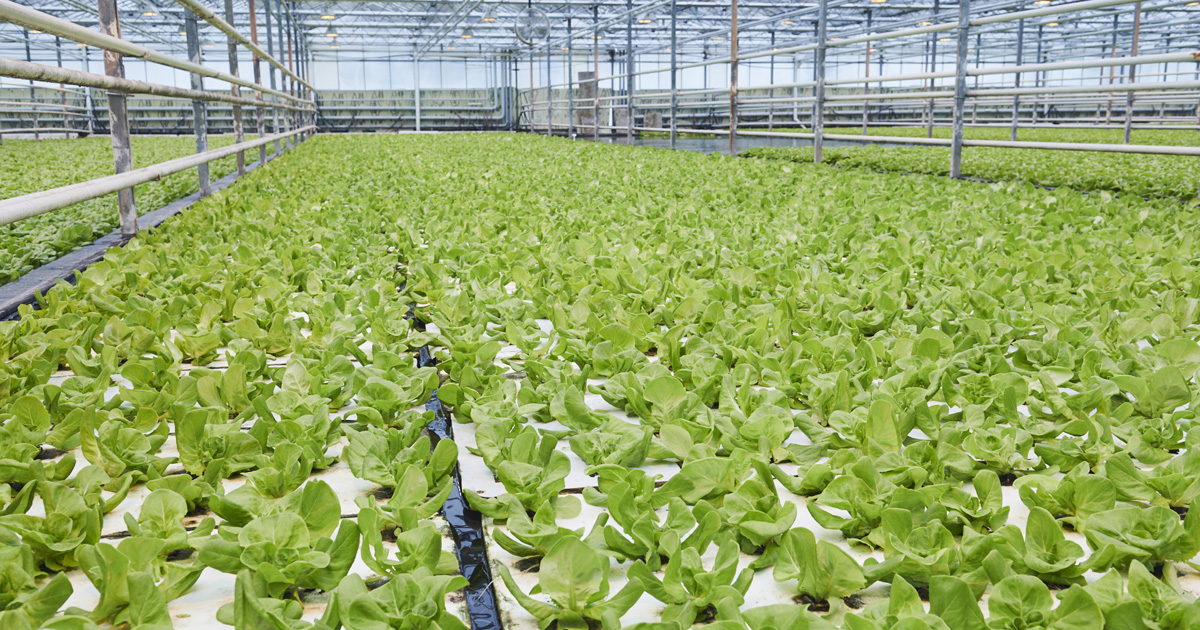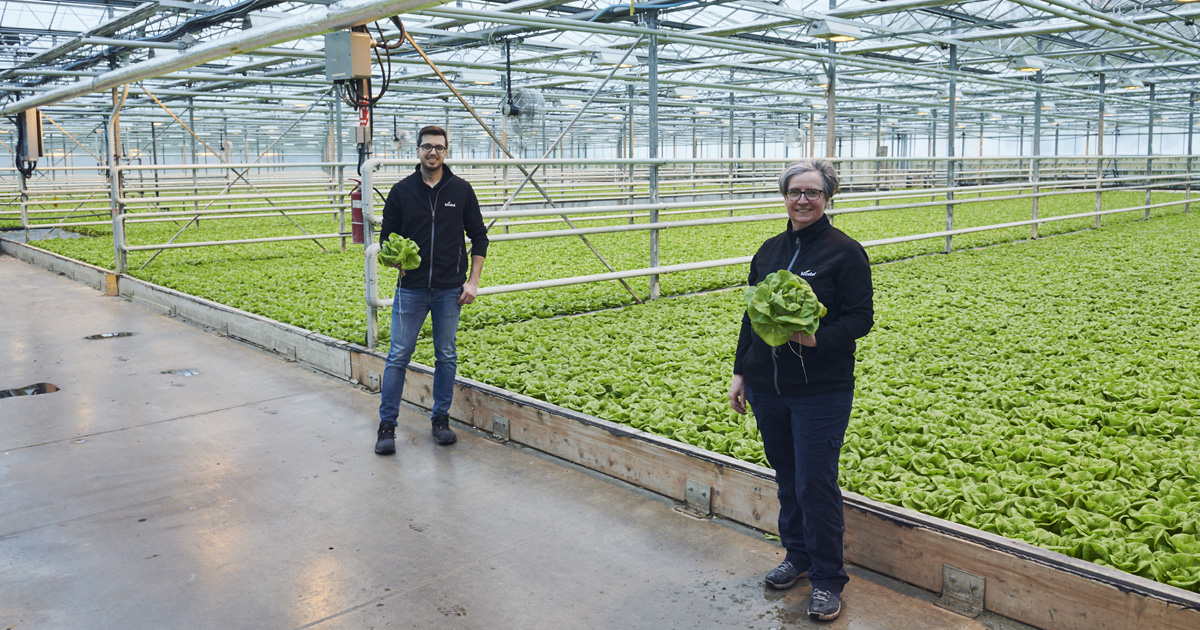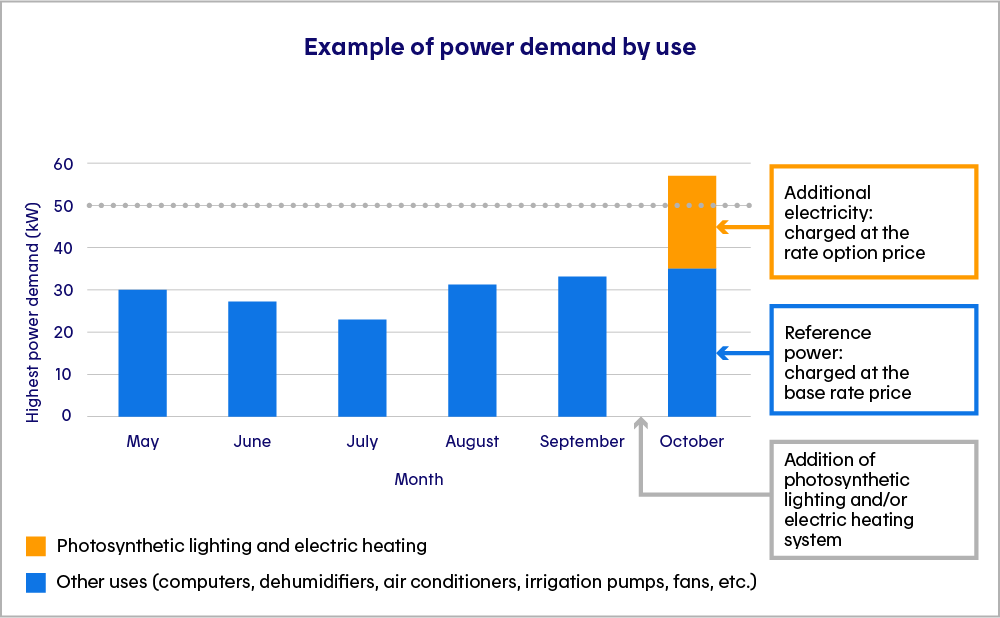Additional Electricity Option for Photosynthetic Lighting or Space Heating to Raise Crops
An option that allows you to raise crops all year long
Under this option, greenhouse growers can benefit from a discounted price for additional electricity used for photosynthetic lighting or space heating to raise crops, provided that they limit their electricity consumption during unauthorized periods.
If you operate a greenhouse or are thinking about building one and think you will be able to adjust your electricity consumption at our request, this rate option could be just what you’re looking for!

How the option works
Outside of unauthorized periods: The price of additional electricity is lower than the average price at your base rate.
During unauthorized periods: The price of additional electricity is /kWh*. You must therefore turn off the equipment powered under the rate option and use an auxiliary energy source such as a generator instead, if needed.
You are notified by email and by phone (call and SMS) prior to each unauthorized period.
This option represents a win-win solution: the lower price rewards you for your efforts, which in turn help us manage the demand for electricity.
* Rate in effect as of April 1, . This information does not replace the Electricity Rates document in any way whatsoever.
Unauthorized periods

Unauthorized periods occur mainly in winter (from December to March), but can occur at other times of the year as well. They last five hours on average and roughly coincide with the morning and afternoon peak demand periods.
You are notified of each unauthorized period by email and by phone (call and SMS). Most notifications are sent the previous day, but in some cases you may receive shorter notice, i.e., a minimum of two hours before the start of the unauthorized period. You may choose to have notifications sent to more than one person.
How to benefit from this option

You must operate or purchase a photosynthetic lighting or electric heating system.

Your maximum power demand must have reached at least 50 kW during the 12 months preceding your sign-up request.

Complete and submit the Information/Sign-Up Request form (see below). We will get back to you within two business days.

Complete and return the registration form that we will send you.

Wait for a confirmation.

It’s as simple as that!
Information/Sign-Up Request
If you have questions about this rate option or would like to sign up, please fill in the form below so that a member of our specialized team can get in touch with you. Normally, you can expect a response within two business days. You can also contact our business customer services at 1 800 463‑9900.
Fill in the form
A green, profitable option for Hydroserre in Ham‑Nord!
“This rate option has made a tremendous difference for us,” said Hydroserre CEO, Sylvain Terrault, who was quick to take advantage of it.
Read article (in French only)



